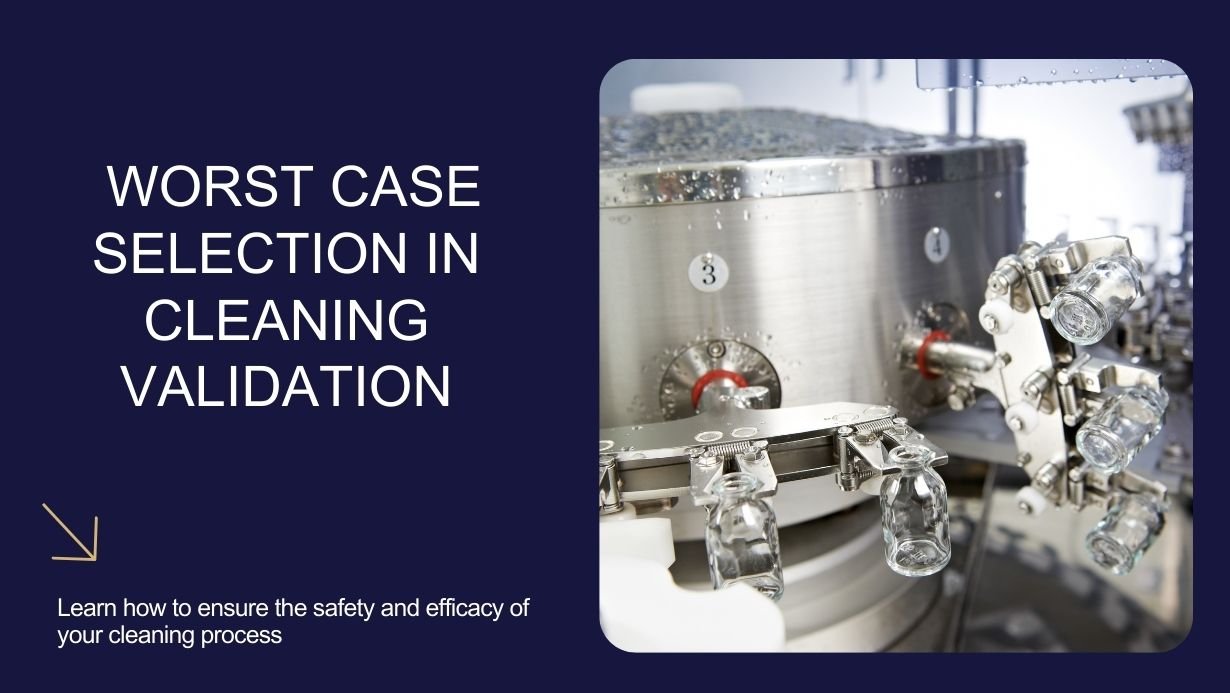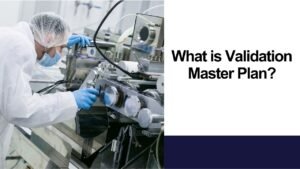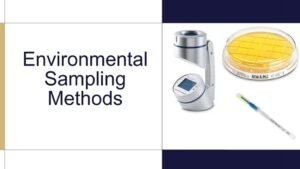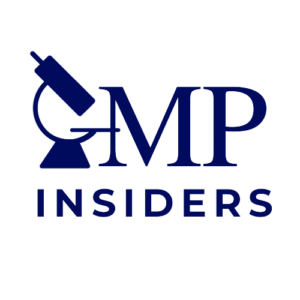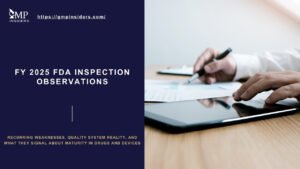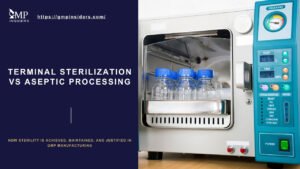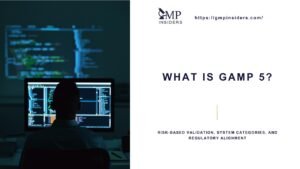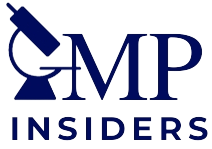The selection of the “worst case” scenario in cleaning validation embodies a critical risk assessment phase, targeting the effective removal of all residues – including active ingredients, excipients, and cleaning agents – to forestall cross-contamination or microbial growth in subsequent manufacturing cycles.
This encompasses a dynamic range of strategies from choosing potent cleaning agents to implementing stringent sampling methods, aimed at boosting the robustness of pharmaceutical production against contamination risks. By delving into the intricacies of criteria for worst-case selection and tackling the challenges, the GMP Insiders team seeks to explain the processes that guarantee the integrity of cleaning validation amidst stringent regulatory requirements.
Regulatory Guidelines for Selection of Worst Case in Cleaning Validation
Both the FDA and EMA provide a framework for the cleaning validation process, with Annex 15 offering more detailed guidance on the selection of worst-case scenarios through risk assessment.
Implementing the principles from these guidelines helps ensure that cleaning validation protocols are capable of effectively managing the risks associated with equipment cleaning and product cross-contamination, thereby safeguarding product quality and patient safety.
FDA
21 CFR Part 211.67 is part of the Current Good Manufacturing Practice (CGMP) regulations enforced by the FDA. While it does not provide detailed guidance specifically on selecting worst-case scenarios for cleaning validation, it establishes the foundation for cleaning validation practices by requiring that:
- Cleaning Procedures Must Be Clearly Defined and Validated: To ensure the removal of residues to a predetermined level of acceptability. The focus is on preventing contamination and cross-contamination.
- Maintenance and Cleaning Schedules: The regulations require written procedures for equipment maintenance and cleaning, including the assignment of responsibility for cleaning and maintaining equipment.
- Records: Keeping detailed records of cleaning and maintenance is mandatory, which indirectly supports the selection of worst-case scenarios by documenting the effectiveness of cleaning procedures across different equipment and products.
The principles outlined in 21 CFR Part 211.67 serve as a basis for implementing a systematic approach to cleaning validation, including the identification of worst-case scenarios through risk assessment and validation studies.
RELATED: GMP vs cGMP: Understanding the Differences
EMA
Annex 15 of the EudraLex Volume 4 provides comprehensive guidance on qualification and validation, including cleaning validation, within the European Union’s regulatory framework. It is more explicit than 21 CFR Part 211.67 regarding the selection of worst-case scenarios:
- Risk Assessment for Cleaning Validation: Annex 15 emphasizes the use of risk assessment to identify worst-case scenarios that need to be considered during cleaning validation. This includes assessing products and processes to determine which presents the highest risk in terms of difficulty to clean and potential impact on product quality.
- Selection of Worst-Case Products: The guidelines suggest selecting products for cleaning validation based on criteria such as solubility, potency, toxicity, and the difficulty of cleaning. The product considered hardest to clean should ideally represent the worst-case scenario.
- Equipment Considerations: Similar to product selection, Annex 15 also advises considering equipment with the most challenging design or the hardest to clean as part of the worst-case scenario assessment.
- Cleaning Validation Approach: It specifies that the validation should cover all worst-case scenarios identified through the risk assessment process. This includes using the most challenging conditions to ensure that the cleaning process is effective under all circumstances.
The Concept of ‘Worst Case’ in Cleaning Validation
In the context of cleaning validation, the identification and selection of “worst case” scenarios are pivotal in ensuring the efficacy and thoroughness of cleaning processes. This selection is guided by several critical factors and considerations:
Complexity of Residue Distribution and Contamination Sites
- The presumption that residues are uniformly distributed in filling equipment is flawed and can lead to inaccurate estimations of worst-case carryover, underscoring the importance of recognizing non-uniform contamination sites which elevate the risk of underestimating carryover.
- The worst case is defined by the condition when residues of the manufactured product are particularly challenging to clean from the equipment surface, necessitating a detailed examination of equipment design and usage patterns.
Solubility and Chemical Characteristics
- Relying solely on solubility as a criterion for worst-case product selection is limited, as a compound’s solubility can vary with changes in pH and temperature. This variability suggests that solubility ‘bands’ provided in pharmacopoeias may not offer the precision needed for cleaning validation.
- The selection process must, therefore, incorporate a broader assessment of chemical characteristics beyond solubility, acknowledging that solubility may not sufficiently address the specific challenges posed by certain residues.
Documented Scientific Rationale and Worst Case Rating Procedure
- A documented scientific rationale is imperative for the chosen worst cases, ensuring that the selection is grounded in a thorough scientific understanding of the potential challenges.
- The worst-case rating procedure facilitates a conclusion that the cleaning procedures are effective for all substances and chemicals within the bracket, including those not individually tested. This approach underscores the methodological rigor required in worst-case selection, ensuring that the validation process is comprehensive and robust.
The selection of worst-case scenarios is not just a procedural requirement but a critical risk assessment phase aimed at safeguarding the integrity of pharmaceutical manufacturing processes. By rigorously identifying the most difficult-to-clean product from all those manufactured in a facility, and considering the equipment train and configuration with the highest potential for cross-contamination, the cleaning validation process is significantly strengthened.
RELATED: Quality Risk Management in the Pharmaceutical Industry
Criteria for Selecting the Worst Case in Cleaning Validation

In the cleaning validation process, selecting the worst-case scenario is paramount for ensuring the safety and efficacy of pharmaceutical products. The criteria for selecting the worst case involve a comprehensive assessment of various factors related to the product, equipment, and cleaning process. The following points should be considered when choosing the worst case for cleaning validation in GMP:
Product Characteristics
Some of the things to consider about the characteristics of the products when selecting the worst case for cleaning validation include:
Solubility and Stability
The solubility of an API directly impacts the ease with which equipment can be cleaned: the more soluble an API is in water, the easier it is to remove, making cleaning processes more efficient. Conversely, APIs that are less soluble or insoluble present more challenges in cleaning, thereby necessitating more rigorous cleaning validation procedures.
This difference in solubility is a critical factor in determining the “worst-case” scenario for cleaning validation. In situations where two products have APIs with equal solubility in water, other factors are considered to decide which represents the worst case for cleaning validation purposes.
Potency and Toxicity
Highly potent products require careful cleaning due to their active properties. The Maximum Allowable Carryover (MACO) and the toxicity of the API, indicated by the LD50 value, play critical roles in this assessment. A lower LD50 value implies higher toxicity, making such APIs a priority in worst-case selection.
- Maximum Allowable Carryover (MACO): This is a calculation used to determine the maximum amount of API residue that can be safely left on manufacturing equipment without posing a risk to subsequent product batches. The MACO takes into account the potency of the API, the size of the next product batch, and safety factors to ensure that any carryover does not affect the safety or efficacy of subsequent products. The MACO is especially relevant for highly potent APIs, where even minimal residues can have significant effects.
- Toxicity (LD50): The LD50 value represents the dose of a substance that is lethal to 50% of a test population (usually rodents) and is a standard measure of a substance’s acute toxicity. A lower LD50 value indicates a higher level of toxicity, meaning that a smaller amount of the substance is needed to cause harm. In the context of cleaning validation, APIs with lower LD50 values are given higher priority in the selection of worst-case scenarios because their higher toxicity at lower doses poses a greater risk of adverse effects if cross-contamination occurs.
Physical and Chemical Properties
The presence of colors in products or excipients that support microbial growth is considered more challenging. Similarly, products manufactured on larger equipment or through processes that increase the microbial load, like aqueous granulation, are flagged as worst cases.
- Presence of Colors in Products or Excipients: Colored substances can be more challenging to clean due to their visual residues, making it harder to verify the cleanliness of equipment. Moreover, certain dyes or pigments might have properties that interact unfavorably with cleaning agents or adhere more strongly to surfaces, complicating the cleaning process.
- Excipients That Support Microbial Growth: Excipients that provide a medium for microbial growth pose a significant risk in pharmaceutical manufacturing. Such substances can lead to contamination issues if not thoroughly removed during cleaning, potentially affecting the safety and efficacy of subsequent batches. Therefore, products containing these excipients are flagged as worst-case scenarios, necessitating more stringent cleaning and validation processes to ensure that any microbial residues are adequately eradicated.
- Larger Equipment: Larger pieces of manufacturing equipment can be more challenging to clean effectively, partly due to the increased surface area and potential for harder-to-reach spots. This makes thorough cleaning more time-consuming and complex, raising the risk of insufficient cleaning and contamination.
- Processes That Increase Microbial Load: Certain manufacturing processes, such as aqueous granulation, inherently increase the risk of microbial contamination due to the use of water, which can serve as a medium for microbial growth. Products manufactured using such processes are, therefore, considered to present a higher risk in the context of cleaning validation.
Concentration of API
This approach ensures that cleaning validation processes are robust and comprehensive, particularly focusing on products that, due to their higher API concentration, could pose significant risks if not properly cleaned from manufacturing equipment.
- Higher API Concentration Equals Higher Risk: Products with a higher concentration of API are considered to pose a greater risk of contaminating subsequent batches if residues are left on equipment. This is because the higher the concentration of the API in the residue, the greater the potential for it to affect the composition and efficacy of the next product processed using the same equipment.
Equipment and Manufacturing Considerations
When choosing the worst case for cleaning validation, you should also take into consideration the following:
Size and Scale
The complexities introduced by larger equipment and greater manufacturing scales highlight the need for tailored cleaning validation strategies.
- Larger Equipment Challenges: Equipment of a larger size poses greater cleaning challenges due to increased surface area, more intricate components, and potentially more difficult-to-access areas. Ensuring the thorough removal of all residues from such equipment necessitates more comprehensive cleaning protocols, possibly incorporating a variety of cleaning methods and more extensive validation procedures to confirm cleanliness.
- Scale of Manufacturing Impact: The scale at which products are manufactured also plays a crucial role in the cleaning validation process. Larger batch sizes mean that more product residue could be left on equipment, increasing the risk of cross-contamination if the cleaning is not adequately effective.
Design and Material
Equipment or surfaces that are difficult to clean due to their design, construction, or material are considered in the worst-case selection. This includes assessing areas where residues are more likely to accumulate or where water may pool, creating environments conducive to microbial growth.
- Impact of Design and Construction: The way equipment is designed and constructed can greatly affect its cleanability. Complex designs with hard-to-reach areas, crevices, or intricate parts may harbor residues more easily than simpler, more accessible designs.
- Material Considerations: The materials used in manufacturing equipment can also influence cleaning effectiveness. Some materials may interact with products or cleaning agents in ways that make residue removal more difficult. Additionally, certain materials may be more prone to damage or wear, creating surfaces where residues can accumulate or where microbial growth can occur more readily.
Contact Surface Area
Considering contact surface area as a parameter for worst-case scenario identification in cleaning validation underscores the need for meticulous planning and execution of cleaning processes.
- Contact Surface Area’s Role: The amount of surface area that comes into contact with the product during manufacturing directly influences the potential for residue accumulation. Larger equipment, with its greater contact surface area, will naturally have more extensive areas where residues can accumulate compared to smaller equipment.
- Impact on Worst-Case Selection: In situations where two products are manufactured using equipment of different sizes, the one produced on the larger equipment is considered the worst case for cleaning validation purposes. This is because the larger equipment, due to its greater contact surface area, is likely to have more substantial residues, making the cleaning process more challenging. Additionally, the larger surface area increases the potential for uneven cleaning or areas being missed entirely, thereby raising the risk of cross-contamination.
- Implications for Cleaning Validation: The identification of products manufactured on larger equipment as worst-case scenarios necessitate more rigorous and comprehensive cleaning protocols. These protocols must ensure that the entire contact surface area is thoroughly cleaned to remove all residues effectively. The goal is to minimize the risk of contaminating subsequent batches and to maintain the integrity of the manufacturing process.
Type of Production
This approach ensures that cleaning protocols are sufficiently robust to remove microbial contaminants and prevent their proliferation, thereby maintaining the sterility and safety of the pharmaceutical products.
- Impact of Manufacturing Process on Microbial Load: Certain manufacturing processes, such as aqueous granulation, inherently involve conditions that can increase the microbial load in the product. The use of water or other liquids in these processes creates a favorable environment for microbial growth, not just in the product but also on the surfaces of the manufacturing equipment.
- Consideration of Microbial Growth in Cleaning Validation: Products manufactured through processes that elevate the microbial load are regarded as worst-case scenarios in the context of cleaning validation. The rationale behind this classification is straightforward: the presence of microbial growth on equipment surfaces presents a significant risk to product quality and safety. If not adequately removed, these microbial contaminants can compromise subsequent batches, leading to potential safety issues for patients and regulatory non-compliance for manufacturers.
Strategies for Successful Worst-Case Selection
To ensure a successful worst-case selection in cleaning validation, a series of strategic approaches can be adopted. These strategies are designed to address the multifaceted nature of cleaning validation, focusing on product characteristics, equipment considerations, and analytical methodologies. Here are some key strategies:
Product and Equipment Considerations
- Lowest Ratio of Batch Size to Maximum Daily Dose: Utilize the lowest ratio of batch size to maximum daily dose for the next drug product in carryover calculation to ensure stringent safety margins are maintained
- Shared Surface Area: Consider only the surface area that is shared between two products for worst-case determination. This approach ensures that the assessment is focused and relevant
- Grouping Approach: Employ the most difficult-to-clean product as the worst case for a group of products within the validation protocol. This method simplifies the validation process by reducing the number of individual tests required
Sampling and Analytical Methods
- Swab Sampling Locations: Choose worst-case swab sampling locations based on the likelihood of possible failures if the cleaning process is not correctly executed. This proactive approach aims to mitigate risks by focusing on potential problem areas.
- Analytical Methods: Opt for Total Organic Carbon (TOC) as the worst-case analytical method, as it can report higher residue levels compared to High-Performance Liquid Chromatography (HPLC), providing a more conservative assessment of cleanliness
- Sampling Recovery Studies: It is essential to subtract a blank value from the experimental test sample result when using TOC, ensuring the accuracy and reliability of the recovery studies
Justification and Digital Solutions
- Justification of Worst-Case Configuration: Demonstrating that the chosen worst-case configuration represents the most challenging and representative scenario for cleaning validation is crucial. This justification ensures that the validation process is robust and comprehensive
- Digitization: Implementing digital solutions can streamline the cleanability impact assessment process.
These strategies collectively enhance the rigor and effectiveness of the worst-case selection in cleaning validation, ensuring that the validation process is both comprehensive and scientifically sound.
By focusing on the most challenging scenarios, pharmaceutical manufacturers can ensure that their cleaning validation processes are capable of preventing contamination and ensuring product safety.
What Does “Worst Case” Mean in the Context of Process Validation?
In process validation, the term “worst case” refers to a set of conditions that, while still within standard operating procedures, present a higher likelihood of process or product failure compared to ideal conditions. It is important to note that these conditions, as defined in the latest draft guidelines, do not necessarily lead to actual process or product failure.
What Are the Accepted Limits for Residues in Cleaning Validation?
The acceptance criteria for cleaning validation stipulate that chemical residues should not exceed 10 parts per million (ppm) of one product detected in another. Additionally, no more than 0.1% of the normal therapeutic dose of one product should be present in the maximum daily dose of another product. These limits ensure that cross-contamination between products is kept to an acceptable minimum.
How Often Should the Worst-Case Scenario Selection Be Reviewed or Updated?
The selection should be reviewed and potentially updated whenever there are changes in product formulation, manufacturing processes, or equipment, as well as in response to findings from ongoing monitoring and validation activities.
Why Is Choosing the Worst Case Important for Cleaning Validation?
When choosing the worst case for cleaning validation, it is important to assess factors such as solubility, toxicity, equipment complexity, and contamination sites. This structured methodology not only ensures compliance with stringent regulatory requirements but also significantly mitigates risks associated with product contamination, ultimately safeguarding patient safety.
Regulatory agencies like the FDA and EMA guide this process, emphasizing the need for a detailed and science-backed approach. As new products and processes come into play, companies must regularly check and update their cleaning methods to stay on top of safety and quality.

